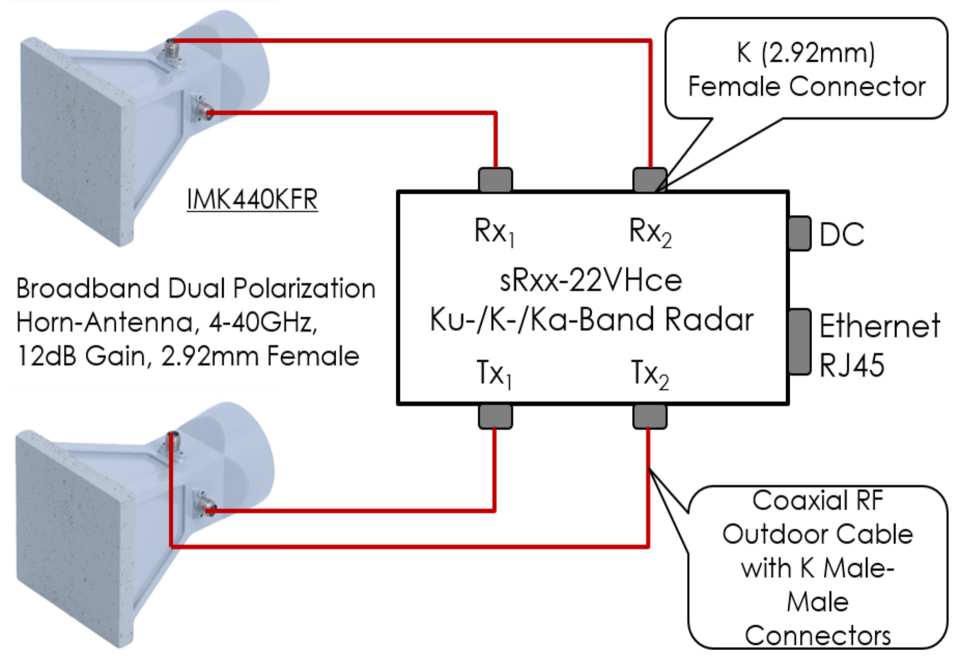
IMST's Radar Board extended with external Horn Antennas for Dual Polarization Radar
Dual Polarization Radar is an essential tool in modern radar technology. It operates by transmitting and receiving electromagnetic waves in both horizontal (H) and vertical (V) polarizations. By evaluating the reflected signals (HH,HV,VH,VV) valuable information about the size, shape and type of detected objects can be extracted. For example, a distinction between rain, snow and hail is possible with this technique. Therefore, the primary applications of Dual Polarization Radar are in meteorology and environmental monitoring. Furthermore ground exploration becomes possible to distinguish topologies on the ground, e.g. urban regions, areas with waters, forests or agricultural fields. Even different properties of buildings can be recognized by polarization evaluation.
IMST is introducing a new development service for Dual Polarization Radar in the Ku-, K- and Ka-Band (13.5 & 17 GHz, 24.125 GHz, 35 GHz). By extending these existing designs with an additional transmission channel, a radar can be designed that is capable of transmitting and receiving radar signals in both vertical and horizontal polarization (HH, HV, VH, VV).
Optionally, external (Horn-) Antennas can be used for increasing the bandwidth of the radar sensor.

Radar Sensors by IMST
Get in contact with the radar team to learn more about this challenging project.
